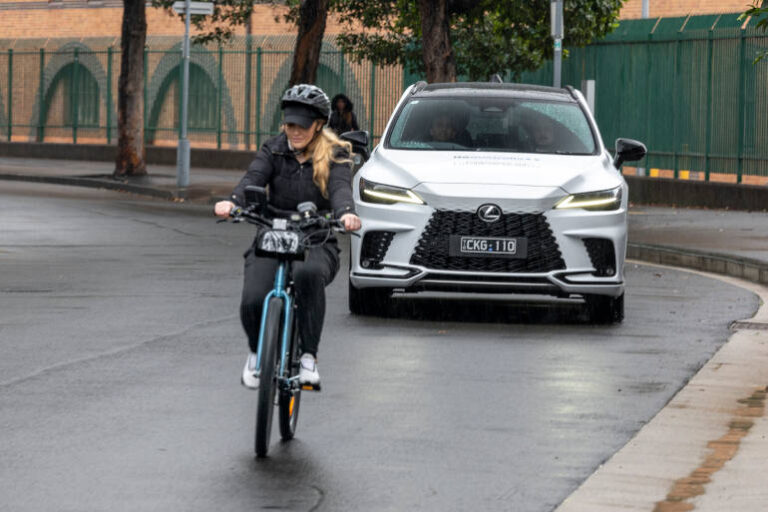Lexus gave a glimpse into a future of safer and efficient urban mobility with real-life demonstrations of next-generation cooperative awareness and collective perception technologies in the country’s busiest city during the Intelligent Transport System (ITS) Australia Summit 2024.
This year’s ITS Australia summit held in Sydney used pioneering perception technology trials to highlight risks and measures that may help to protect vulnerable road users – pedestrians especially children and the elderly, motorcyclists, bicyclists and scooter riders amongst others – who do not have protection in crashes and are subsequently over-represented in statistics.
The summit brought together more than 800 delegates from government, industry and research organisations over three days to see first-hand how real-time cooperative awareness and collective perception technologies can make roads safer for all Australian road users.
Three of the very latest Lexus vehicles – two RZ 450e BEVs and an RX 500h F Sport Performance – fitted with advanced prototype Cooperative Intelligent Transport Systems (C-ITS) completed more than 150 on-board demonstrations on Darling Island with the guidance of Lexus Australia’s dedicated Cooperative and Automated Vehicle (CAV) team.
Demonstrations included advanced infrastructure-to-vehicle and vehicle-to-vehicle communications, where cooperative awareness and collective perception technologies provide advanced warnings extending beyond the limit of current-generation line-of-sight systems.
The infrastructure-to-vehicle application using collective perception, for example, warns drivers of unsighted pedestrians approaching from around a corner, with vehicle-to-vehicle cooperative awareness messages warning drivers of an unsighted vehicle approaching from a perpendicular direction, while a connected bicycle can relay its position to an unsighted vehicle approaching quickly from behind.
The technology can assist with warning drivers of accidents way ahead, unsighted road works and traffic congestion, and even pending changes to speed limits. The network can also control traffic lights in real time to allow for safe passage of emergency vehicles, as well as better manage the ebbs and flow of traffic during peak and non-peak times.
Communications between vehicle, infrastructure and network is through Dedicated Short-Range Communication (DSRC), with drivers in the specially fitted Lexus vehicles warned by visual and audible alerts.
Lexus Australia Chief Executive John Pappas said learnings from working closely with ITS Australia and key stakeholders contributes towards the ultimate Lexus goal of zero road fatalities.
“Mobility without trauma is only achievable by improving road safety for every road user, which means drivers, motorcyclists, bicyclists, scooter riders and pedestrians alike,” Mr. Pappas said.
“In addition to projecting risk situations in dynamic road conditions to enable proactive responses, intelligent perception technology can also improve traffic flow which reduces fuel consumption and therefore harmful CO2 tailpipe emissions.
“Lexus has proudly supported ITS Australia since 2018 with our own dedicated team and test vehicles. We will continue to work closely with all government, industry and technology stakeholders to demonstrate how perception technology can enhance social, environmental and economic well-being for all Australian road users.”
Vulnerable road users continue to be over-represented in national road deaths, with statistics from the Department of Infrastructure, Transport, Regional Development, Communications and the Arts showing that in 2023 motorcyclists (20 per cent), pedestrians (12.5 per cent) and cyclists (3.6 per cent) together accounted for just over one in three national road deaths.






